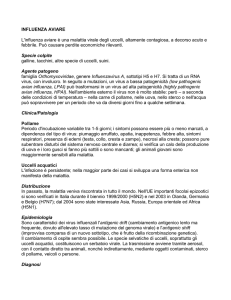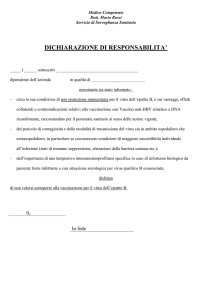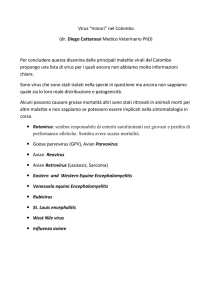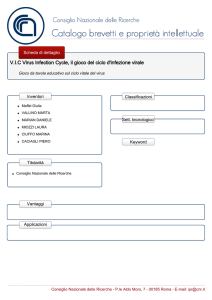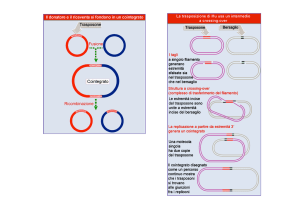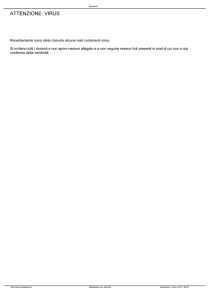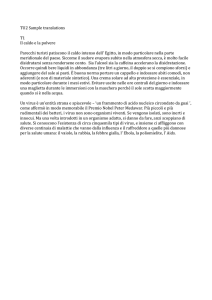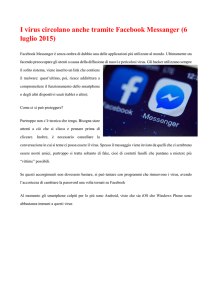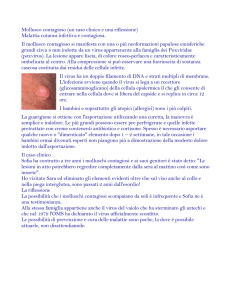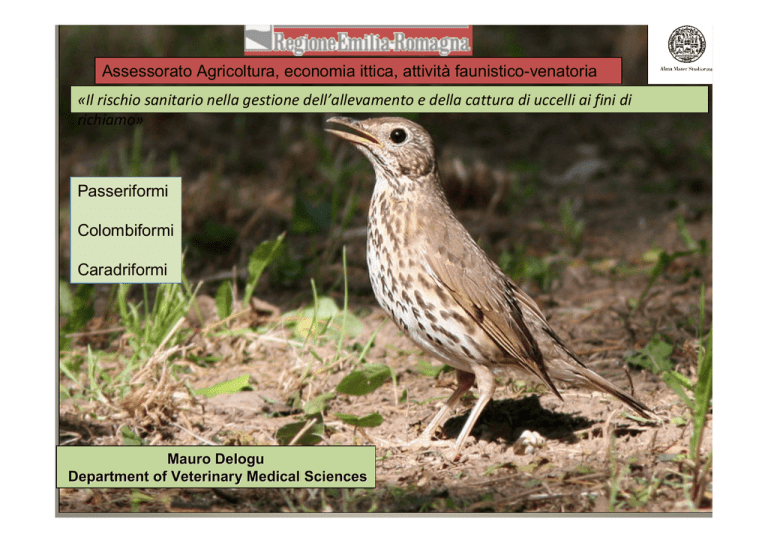
Assessorato Agricoltura, economia ittica, attività faunistico-venatoria
«Il rischio sanitario nella gestione dell’allevamento e della cattura di uccelli ai fini di
richiamo»
Passeriformi
Colombiformi
Caradriformi
Mauro Delogu
Department of Veterinary Medical Sciences
Malattie trasmissibili nelle specie di cattura, soggette a normative comunitarie
e/o zoonotiche :Il rischio sanitario di introduzione:
Encefalite del Nilo
(WND)
Usutu Virus
Pseudo peste Aviare
(ND)
Paratubercolosi
Influenza aviare
Ecologia delle migrazioni : serbatoi verso nuovi ospiti o nuovi ospiti verso serbatoi?
Le potenzialità ed i limiti ecologici delle migrazioni umane ed animali:
-i limiti trofici ed il loro ruolo nelle diverse specie ( flusso, concentrazione)
- l’evoluzione delle tempistiche di spostamento e l’ecologia del patogeno …
Le Modificazioni climatiche e la velocità del cambiamento come motore evolutivo:
- vettori eterotermi ed espansioni di areale e di periodo biologico di attività
- modificazioni della resistenza ambientale del patogeno
Usutu Virus
Faviviridae Emergente
Il virus Usutu,
il cui nome deriva da quello di un fiume
in Swaziland,
è stato isolato per la prima volta da
zanzare
della specie Culex neavei in Sudafrica nel
1959
e da allora è stato descritto
in molti Paesi dell’Africa sub-Sahariana
Origine geografica
Repubblica
CentroAfricana
Austria 2001
Ungheria 2005
Catalogna 2006
Italia 2008, 2009, 2010
Usutu virus
Histopathological lesions and detection of viral signals by
IHC and ISH in USUV-infected blackbird organs.
(A) Liver; acute necrotizing hepatitis, hematoxylin-eosin
staining.
(B) Heart; focal myocardial degeneration (arrow),
hematoxylin-eosin staining.
(C) USUV antigen in the brain; multiple IHC-positive foci.
(D) USUV antigen in the heart; IHC-positive myocardial
cells.
(E) USUV nucleic acid in the brain; multiple ISH-positive
neurons. Magnifications, x396.
L’evidenza Biologica di presenza in ambiente
L’Usutu virus è stato per la prima volta isolato nelle zanzare Culex neavei in Sudafrica, nel 1959.
I vettori conosciuti di USUV sono Coquillettidia aurites, Culex neavei e Culex perfuscus.
Diagnosi Differenziale:
WND
Malaria aviare
Avvelenamenti
Traumi
•
• Passeriformes
•
•
•
Ciconiiformes
Charadriiformes
Strigiformes
•
Anseriformes
•
•
•
•
•
Piciformes
Columbiformes
Gruiformes
Psittaciformes
Galliformes
Viremie Elevate
Viremia e Soglia di infettività
•
Viremie modeste
West Nile Virus, Ecologia negli uccelli selvatici e
Amplificazione della popolazione virale
Ditteri competenti
Culex pipiens
Cx. restuans
Cx. quinquefasciatus
Cx. tarsalis
Ospiti accidentali
Uomo
Cavallo
Altri mammiferi
Vettori*
Ospiti che lo amplificano
sviluppando viremie elevate
(Es Passeriformi)
?
?
Culex salinarius
Cx.nigripalpus
Ochlerotatus sollicitans
Oc. taeniorhynchus
Aedes vexans
Aedes albopictus
Malaria Aviare – Plasmodium spp
Capillariosi
Nematodi a ciclo diretto: Ascaridiasi
Le Tenie e i parassiti a ciclo indiretto
Mycobacterium avium subsp. columbae
Relationship between Mycobacterium avium, Mycobacterium paratuberculosis
and "wood pigeon mycobacteria". Determinations by DNA-DNA hybridization.
McFadden J et all.- M. paratuberculosis may be responsible for some cases of Crohn's
disease and that the wood pigeon strain of M. avium may also be an inflammatory bowel
disease pathogen in humans. J Clin Microbiol. 1992 Dec;30(12):3070-3
Tricomoniasi (Trichomonas gallinae)
Pigeon paramyxovirus serotype 1 (PPMV
1)
affects
pigeons
and
doves
(Columbiformes) and is known to infect
poultry. Widespread in racing pigeon
populations in many countries of the world,
PPMV-1 spread to wild birds such as wood
pigeons
(Columba
palumbus)
and
Eurasian collared doves (Streptopelia
decaocto; ECD)
Salmonella typhimurium
Surveillance in wild spill over species
Epiphenomenon species role in pathogens geographic
distribution and movements:
Epiphenomenon species can spread
HPAI virus during movement
or migration?
-flock size
-migratory in long/ short distance
- How much time is necessary to migrate
-migration routes and stages
sampling host species during surveillance…
Sampling of epiphenomena is often carried out and the role of reservoir is erroneously
attributed. It is often thought that the source of infection for domestic birds is only represented
by wild birds, however the disease can enter the domestic flock, by a means which does not
involve wild fauna. Moreover a distinction between wild free-living species and the same species
kept in captivity is not always made complicating any epidemiological interpretation
There is in the nature a mechanism where the
influenza viruses are attracted and concentrated
from water to the bird body
Interfacce selvatiche - I sinantropi
Il via
Serbatoi selvatici
Ambiente
Serbatoi domestici
Interfacce domestiche
October 2001
H7N3
THE
ANCESTOR
October 2002
From wild to domestic
Type A
(8 RNA segments)
-PB1, PB2, PB3
-PA)
4° - HA (Haemoagglutinin)
5° - NP(Nucleoprotein)
6° - NA (Neuroaminidase)
7° - M1, M2 (MatrixProt.)
8° - NS .1, NS 2
RISCHIO SANITARIO E BIOSICUREZZA? E’ più sicuro e gestibile allevare


